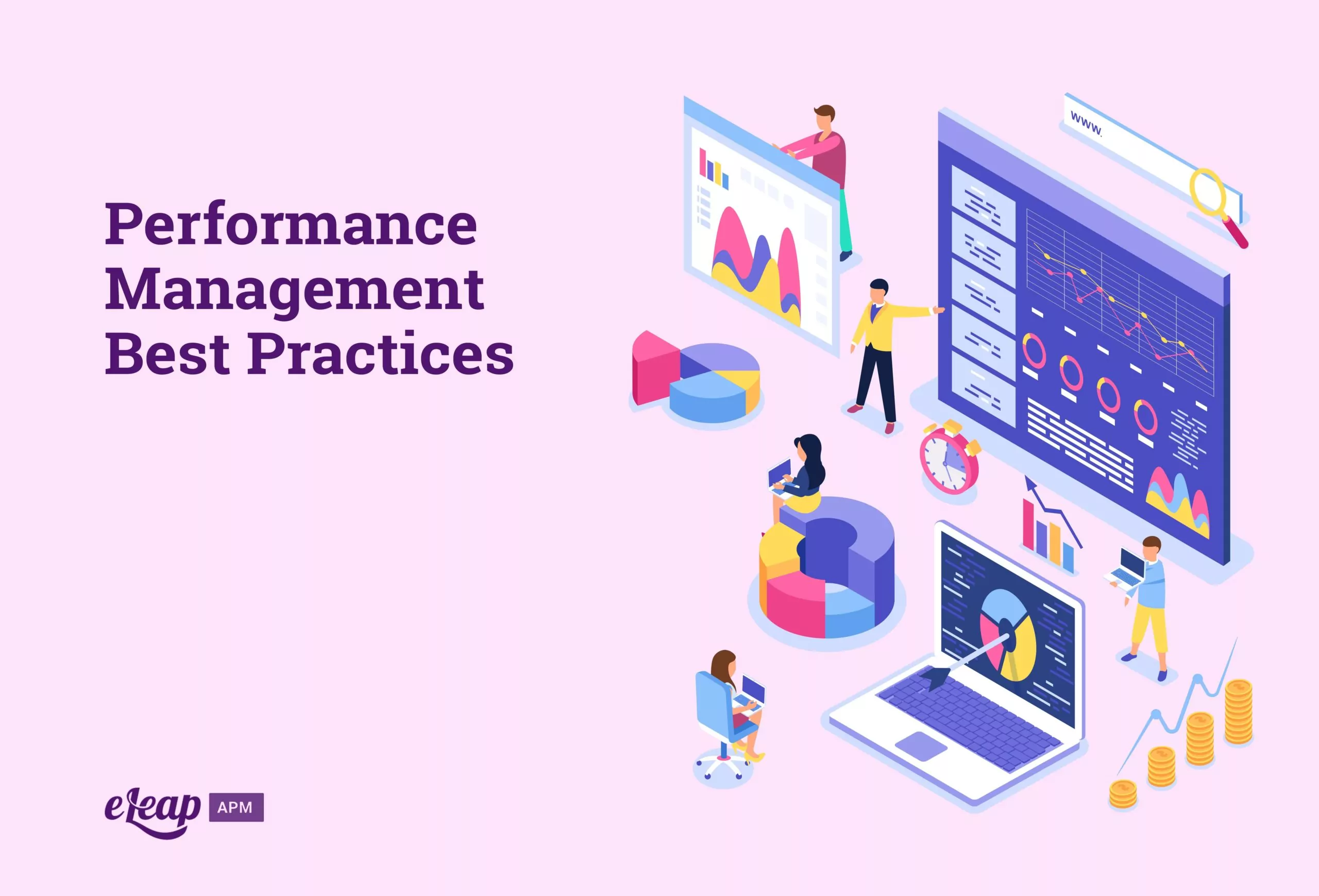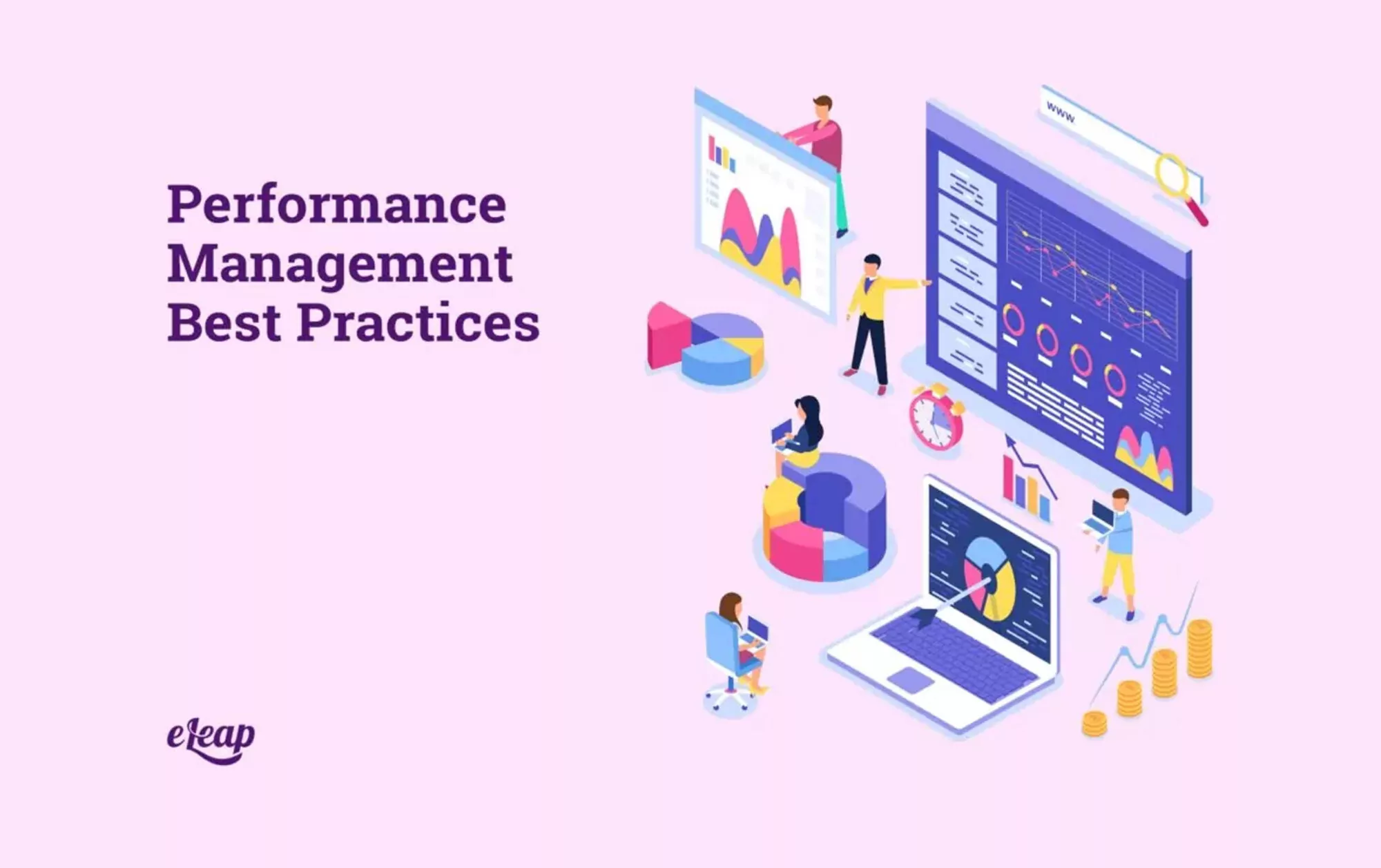Performance Management Best Practices

In order to have the best possible workforce, it’s important to attract the best possible talent. But hiring employees who are talented from the get-go certainly isn’t the only way to ensure you have a top-quality team. In fact, focusing solely on hiring good workers won’t get you the results you need in the long run. It’s critical that organizations work to improve the way their employees perform and grow throughout their careers with your company. If you don’t foster a culture that focuses on constantly encouraging your employees to improve and seek growth, you’re missing out hugely and may actually end up losing some of your best workers. In order to ensure you’re getting the best out of your workforce, you need to have a good performance management system in place. The eLeaP Performance Management Platform, which includes a continuous performance management system, provides organizations with powerful options to attract and retain high-caliber team members.
Unfortunately, today’s organizations do not value performance management nearly as much as they should. Did you know that integrating performance management practices increases employee satisfaction and maximizes productivity? But there’s a certain way to go about performance management in our contemporary workplaces in order to get the best results. Even though many companies still use traditional performance management, including annual reviews, board meetings, and ranking scales, these are no longer the best practices.
Although traditional performance management methods continue to be valuable in some ways, without a personalized and contemporary approach, they are largely ineffective. Organizations are rapidly moving away from traditional performance management tools because, these days, there are better solutions. However, some companies are still having difficulty finding the right balance. While performance management tools aren’t meant to be an overnight fix, it’s crucial for companies to adopt them so they can start to improve the way they treat their employees. So, what best performance management practices can you adopt to achieve these goals? (Download “The Skeptics Guide to Performance Management” eBook)

Set Goals and Map Out a Plan
Set actionable goals for your employees so that they know what you expect from them. Overall, they’ll be more engaged and produce their best work if you set attainable and well-defined goals. When doing this, make sure to listen to your employees’ concerns or barriers they think they might run into. If they don’t feel they will be able to achieve a desired goal, listen to their worries and help them achieve it either by shifting expectations or helping them fulfill their objectives.
Make sure to document goals so they can be referred to easily in the future and can utilize during performance reviews. Make sure the employees also have access to these documents so they can refer to them while working on their goals. Remember, if an employee is left without the right parameters or guidance, they cannot perform their best.
Provide Tools and Frequent Coaching
Employees who have a lot of knowledge from the initial stages of hiring are valuable, but this won’t help them grow in the long run. Sometimes, the best employees are not those with extensive knowledge, to begin with, but those who are willing to learn quickly. It’s crucial that you provide your employees with the tools, training, and time needed so they can be successful. Without the right tools and coaching, you also can’t hold your employees responsible when they don’t perform at their best.
Continuous training and access to the necessary tools also increase employee morale and engagement. They’re likely to be happier in their jobs if they feel their company values them by providing what is needed for them to be successful. You’ll quickly start to lose valuable employees if you fail to provide them with the things they need to work to a high standard.
Conduct Frequent Formal Performance Reviews
Traditionally, performance reviews tend to come in the form of a quarterly or annual review, a rating scale, or an annual ranking. However, these types of reviews aren’t actually the best way to get the most out of your workforce. In fact, in some cases, infrequent reviews can actually do more damage than good.
Performance reviews should be done frequently, and you should make sure that you allow room for the employee to give their own feedback and opinions. For example, utilizing a self-evaluation can be very valuable.
Foster a Culture of Continuous Feedback
Companies are shifting their feedback systems to include continuous feedback in addition to formal evaluations. Allowing continuous feedback takes the pressure off annual reviews and helps your employees to learn more. Besides having the ability to hold your employees accountable, this method also improves employee retention. Additionally, it allows you to provide feedback in real-time, which is extremely valuable.
Reward Good Performance
Feedback works wonders, but if you never reward employees for the things they do right, none of it will matter. Make sure to recognize achievements both in real-time and during review processes. Your employees will likely feel undervalued and resentful if you conduct performance reviews that place all the focus on the negative. If giving real-time rewards, make sure to do so in a way that the employee will appreciate. Some employees may prefer being rewarded publicly, while others appreciate one-on-one acknowledgment. Both your employees and your organization as a whole will benefit tremendously from a system of recognition and rewards. Employees will feel valued if they are given space to acknowledge their own and others’ performances. It’s also been shown that organizations that implement a system of recognition and rewards have lower turnover rates and are far more able to retain their employees due to higher job satisfaction.
Even though it can be time-consuming and a little bit arduous to set up a good performance management system, it’s essential for a smooth-running workplace. Traditional performance management systems are outdated and don’t have a place in the contemporary work environment. By implementing a modern performance management system, you can encourage employee transparency, build trust, and improve performance, productivity, and retention rates.